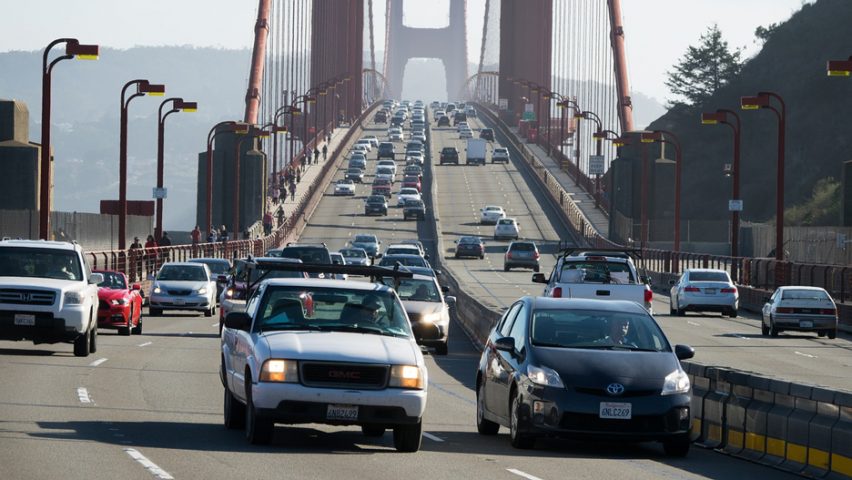San Francisco might put the brakes on Uber and Lyft, after a new report has pinned the city's worsening congestion on the ride-sharing services.
The San Francisco County Transportation Authority report found that the transportation network companies (TNC) like Lyft and Uber caused a 51 per cent increase in vehicle hours on the road – far outweighing the impact of other causes like changes in population and employment.
"This report further quantifies the impact ride-hail services have on our streets," said Aaron Peskin, chair of the San Francisco County Transportation Authority.
Released 16 October 2018, the TNCs and Congestion study explored the effects of the ride-hail services between 2010 to 2016 on increased congestion, based on three metrics.
These included overall hours of vehicle delay, which measures the difference between congested travel time and the optimum free-flow travel time in a certain road segment; vehicle miles traveled; and speed.
Call for city to reduce Uber and Lyft services
Uber and Lyft were also accountable for 47 per cent of vehicle miles traveled, and reducing the speed on roadways by 55 per cent, the study found.
Peskin is now calling for the City of San Francisco to increase tax on the services and reduce their availability, as part of its Transit-First Policy. This initiative aims to reduce congestion by bolstering other forms of transit, like buses, cycling and walking.
"It underscores the importance of our current collaboration with Transportation Network Companies to develop a per-trip tax to help mitigate the impacts of these trips, and informs our efforts to balance the availability of these new mobility options with our Transit-First policies," Peskin said.
Data for the report was collated by a team of researchers from the University of Kentucky and San Francisco's Transportation Authority.
The team sourced the data from traffic analytics company Inrix – which pulls together information from real-time GPS monitoring sources – as well as highway performance monitoring systems and research on TNC from Northeastern University.
All of this was then teamed wider factors that could contribute to congestion, provided by local and regional planning agencies, including changes to infrastructure, population and employment.
Uber and Lyft respond to "flawed" report
In response, Uber has issued a statement that calls into question the report's validity.
"While we appreciate efforts to better understand the causes of congestion, this study fails to consider critical factors like the spike in tourism or the growth of freight deliveries, both of which have exploded since the study's baseline date of 2010," said the company, while Lyft similarly disputed the findings.
"The study is highly flawed," said Lyft in a statement issued to Dezeen. "When the math is done correctly, over 99 percent of traffic is not attributable to Lyft."
"The flaws are so significant in this study, it ought to be withdrawn," it added.
Other findings in the report concluded that the impact of the duo was most noticeable in the evening, and concentrated on the denser areas of the city – the services accounted for 73 per cent of the increased congestion in the downtown Financial District. The city's western and southern neighbourhoods were less impacted.
The remainder of increased congestion was mainly caused by job and population growth, according to the report. Changes in street layout, such as converting traffic lanes to bus only, made up less than five per cent.
"Understanding the factors of congestion is key to our ability to address the problem effectively and maintain the accessibility of our downtown core," said San Francisco County Transportation Authority executive director Tilly Chang.
"We are committed to data driven analyses like this report to serve as the foundation for deeper understanding and informed action."
Ride-sharing services founded in San Francisco
Uber was founded by Travis Kalanick and Garrett Camp in 2009, initially as a black car service for 100 friends in San Francisco. It was shortly followed by Lyft, which was established in the city in 2012.
The cheap, on-demand travel services have disrupted how people travel in cities, vastly reducing the use of other car services and public transport.
This is not the first time that the ride-sharing services have caused controversy in their home city. In 2016, San Francisco ordered Uber's new fleet of self-driving cars off its streets one day after launching, after footage emerged of two vehicles running red lights.

